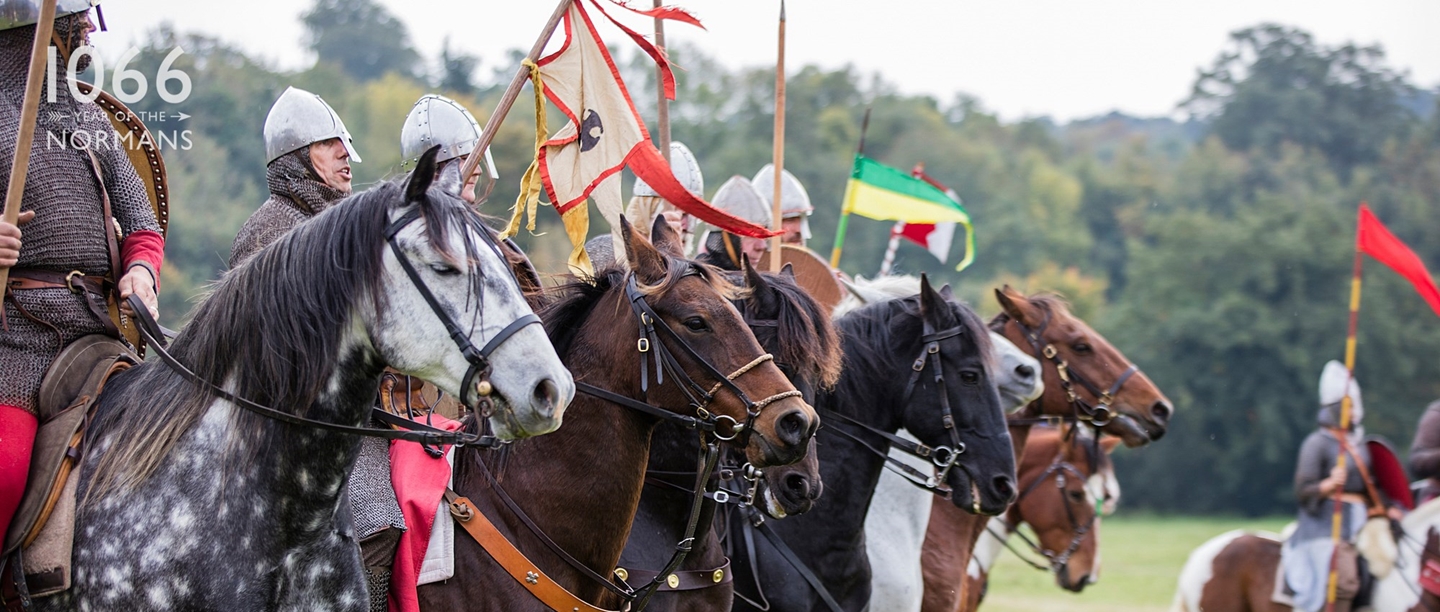The Appearance of Halley's Comet in 1066 was taken as an important omen
The Bayeux Tapestry shows the audience witnessing Harold’s coronation watching Halley's Comet, which is depicted in the sky as an omen of Harold's fate.
There were two other important battles in 1066
Harold Godwinson and William of Normandy were not the only contenders for the English throne in 1066.
Harold’s banished brother Tostig invaded England with King Harald Hardrada ('hard ruler') of Norway and his Norwegian army. Tostig and Hardrada defeated the northern and midland English Earls on the 20 September at Fulford near York, before themselves being defeated on the 25 September at Stamford Bridge, East Yorkshire, by an army led by Harold himself.
It Was Not Obvious William Would Win The Battle
The Saxon and Norman armies were fairly evenly matched, which is why the battle lasted most of the day – unusually long for a medieval battle.
The Saxons created effective defensive walls using their shields, which the Normans were unable to break through. The Normans gained the upper hand when they feigned retreat. This led some Saxons to break rank and follow the Normans, which allowed other Norman soldiers to attack the weak points left in the shield wall.
A Minstrel Struck The First Blow In The Battle Of Hastings
Ivo Taillefer (William’s minstrel--whose name means 'hewer of iron') killed the first Saxon of the battle.
The Carmen de Hastingae Proelio ('Song of the Battle of Hastings' ) says that a Saxon soldier broke ranks, and Taillefer killed him, while later sources say that Taillefer charged into the enemy shield-wall, where he killed several Saxons before he was overwhelmed.
Harold May Not Have Been Killed By An Arrow In His Eye
Harold’s death is described in different ways by different sources. Some suggest that the image of an anonymous arrow falling from the heavens and striking Harold is more favourable to William than the idea of him being hacked to pieces by William's men.
The Location Of King Harold's Body Remains Unknown
Early sources record that William denied Harold’s mother his body, though she offered its weight in gold. This is contradicted by later sources, which say that Harold’s mutilated body was identified by his mistress and buried at Waltham Abbey, Essex, which he had re-founded.
Parts of the abbey remains are in English Heritage care, and you can still see his alleged grave there. But the exact location of Harold’s body is disputed to this day.
But You Can Visit The Spot Where King Harold Was Killed
Visitors who come to Battle Abbey today can see a stone marker showing where Harold fell during the battle. William insisted that the high altar of the abbey church should mark the place where Harold fell.
Modern English Is a Result Of The Norman Conquest
The English we speak today is the product of a lot of intermingling with French words. Poor, letter, age, and pork are all words with Norman-French origins, to name just a few. 950 years later, English reflects the result of the Battle of Hastings in 1066.
See More
-

1066 and the Norman Conquest
950 years after the Battle of Hastings, visit our Normans Hub to find out about the battle and its impact.
-

Explore Norman Castles and Abbeys
See the mark the Normans left on England at castles, abbeys and other important sites across the country.
-

The People of 1066
Find out more about the main players in 1066, from William of Normandy to Matilda of Flanders.
